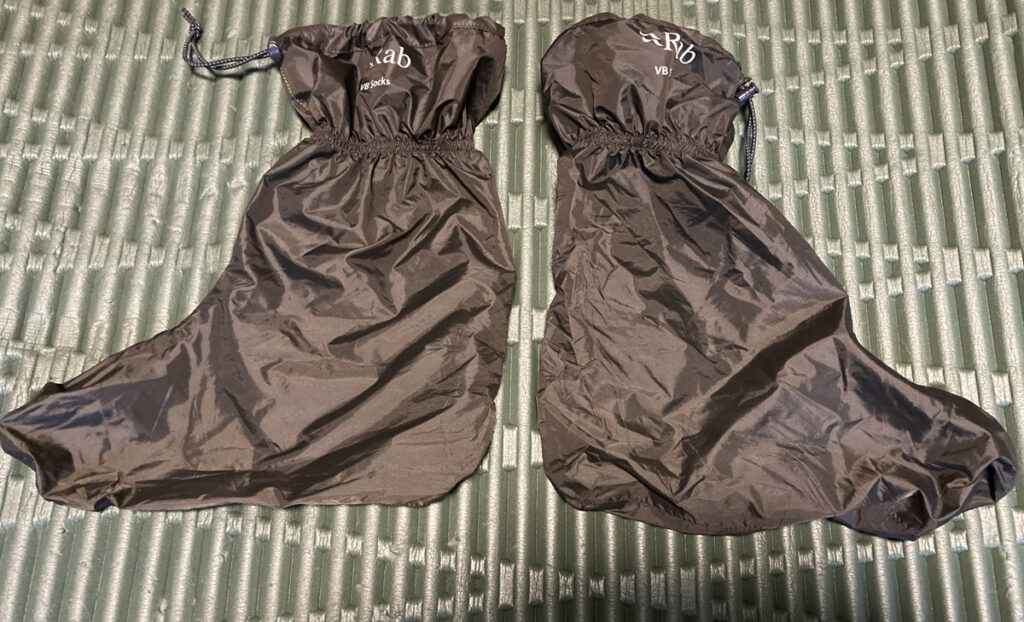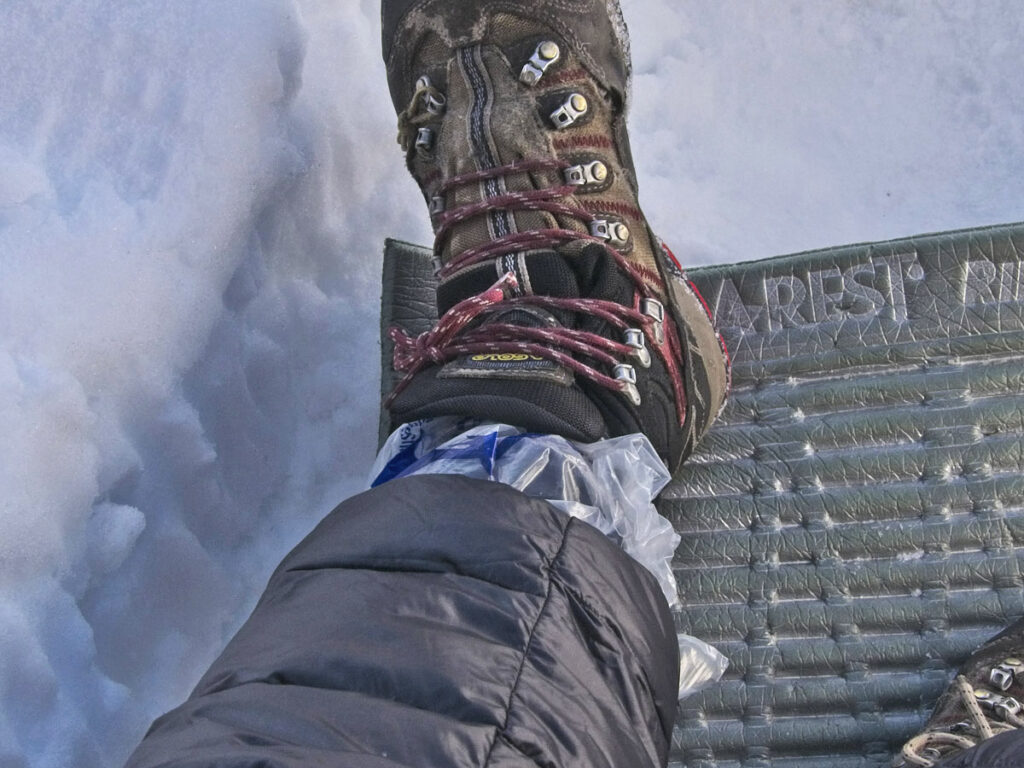Some mountain climbers use vapor-barrier socks to keep double-layered boots dry. These boots have a warm removable inner liner and a plastic outer shell. The plaster outer shell keeps out moisture, but because the boots don’t breathe, perspiration soaks the socks and liner which can then freeze. Vapor barrier (VB) sock are used to prevent this problem. The VB socks hold in the moisture to keep the boot dry.

I’ve never needed VB socks to keep boots dry, but I found a new use for the barrier socks—to keep my feet dry and warm around camp.
I don’t wear mountain climbing boots or double-layer boots when snowshoeing or hiking in the snow. If I know I’ll need crampons, I do take heavier and stiffer winter boots, the Lowa Tibet GTX, which are reasonably waterproof, but it is not a mountain climbing boot. For most trips, I wear lighter and more breathable hiking boots, the Asolo Fugitive GTX or the Merrell Moab 2 Mid Tactical Response Waterproof Boot. The Asolos and Merrells are fine with snowshoes but too flexible for crampons (there is a risk of the crampons coming off). The Asolo boots are not fully waterproof nor long-lasting. The seams tend to break in spots creating holes for water to enter and the boots get soaked in the shoulder seasons. Despite these flaws, they are comfortable and one of the few wide-width shoes available. The Merrells provide better waterproofing and are also available in wide width. With either brand, and likely most every brand, it is not possible to keep the boots dry in all conditions, especially the slushy snow of spring.
The usual solution for wet boots is to change out of wet socks at camp, putting on a new liner sock and thicker outer sock, and setting the wet socks and boots aside for the evening. This keeps the feet dry and warm at camp. But here’s the problem. What if you need to put your wet boots back on around camp? To avoid getting your fresh socks wet or having to put your wet socks back on, you can slip on plastic bags or VB socks on your feet. Now you can put the wet boots back on without getting your dry camp socks wet.
Plastic bread bags are a workable solution, but VB socks can do the same job while only adding about 2 ounces to your pack weight. VB socks are more durable and have an ankle draw cord so they don’t fall down. You can also use each sock as a dry sack to store and protect your other camp base-layer clothing.

Adding any needless weight to my pack is something I want to avoid. However, you can walk around camp in VB socks and they don’t fall off as plastic bags do. That is, most of the time, I don’t need my boots to walk around camp. The VB socks do the job. VB socks are lighter and more compact than down booties, so I am actually saving a bit of weight. The VB socks do add some warmth too.
I still regard VB socks as a luxury item, but worth taking on shoulder season trips when I don’t want booties or as a substitute for down booties even on cold winter trips (10º–30ºF range). I think of VB socks as booties without the insulation or shoulder-season camp booties. They are intended for one purpose in extreme cold weather, but actually work for another purpose in milder conditions. They are simply more versatile than booties.